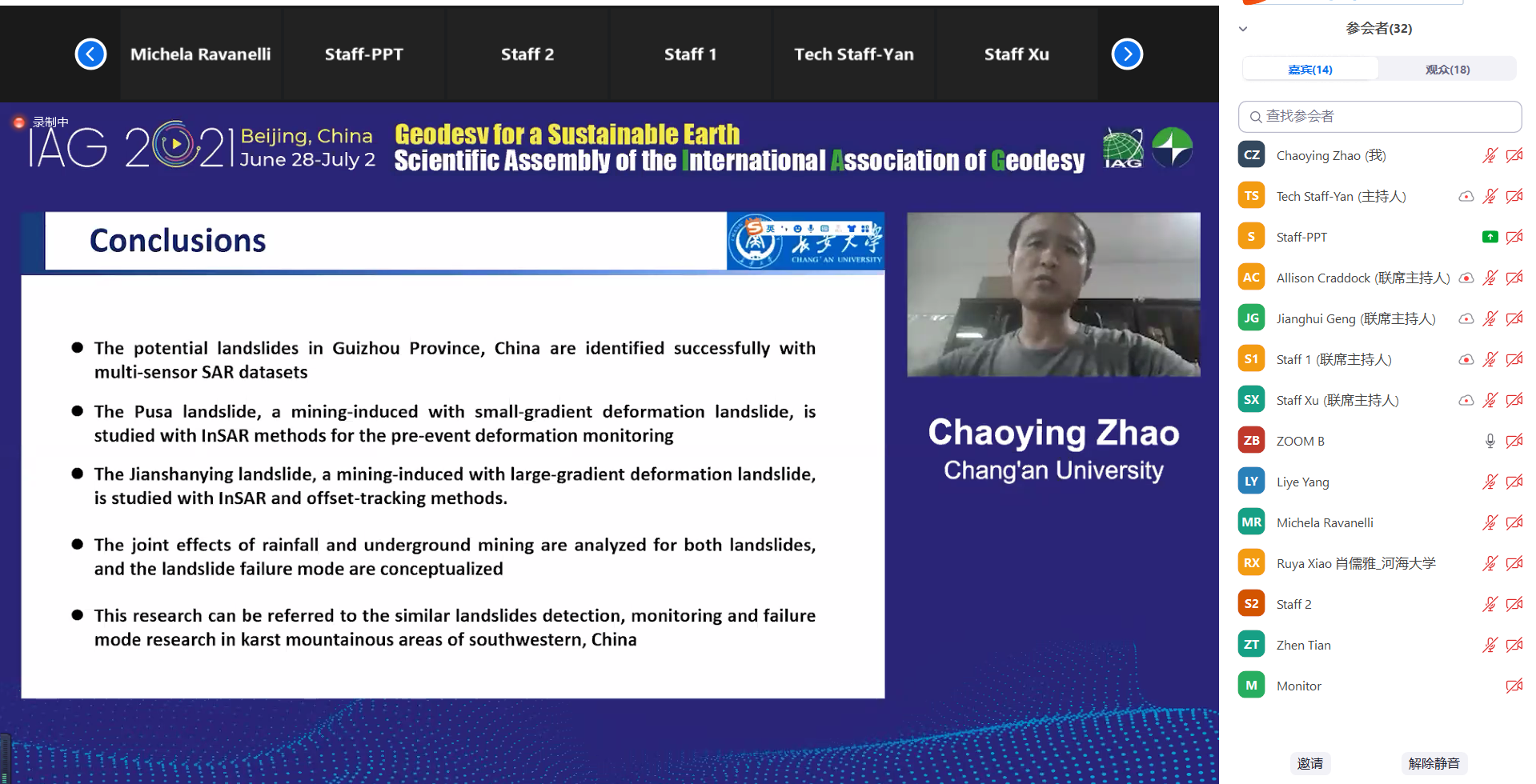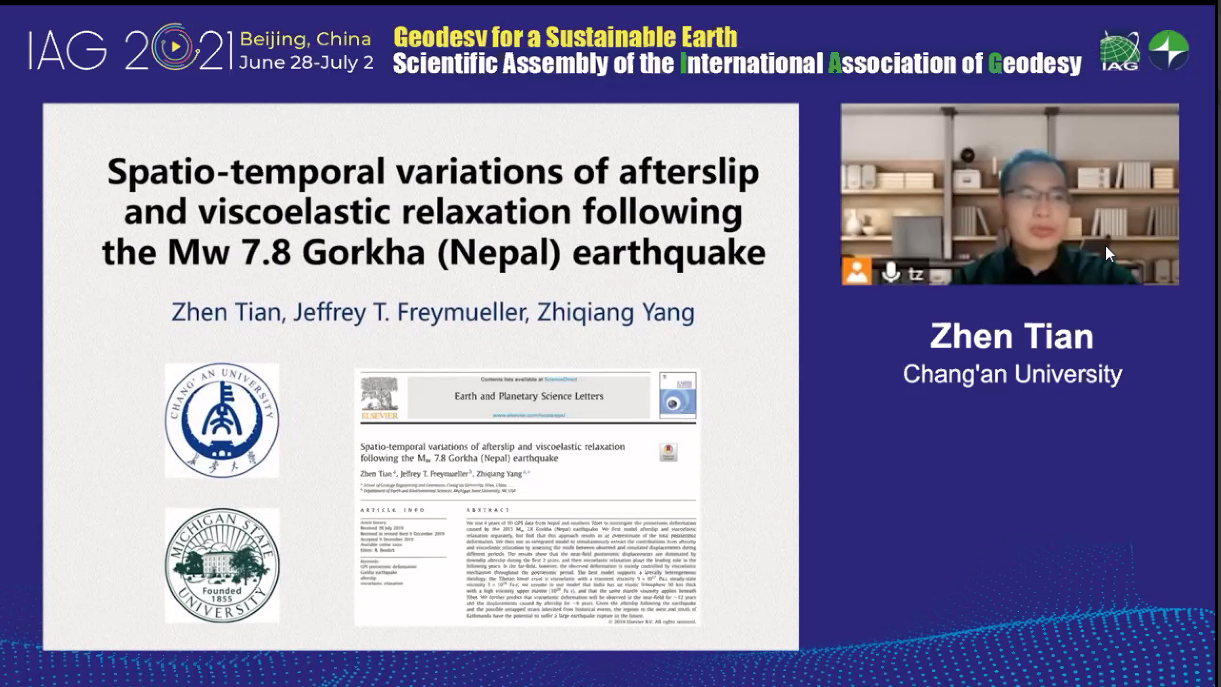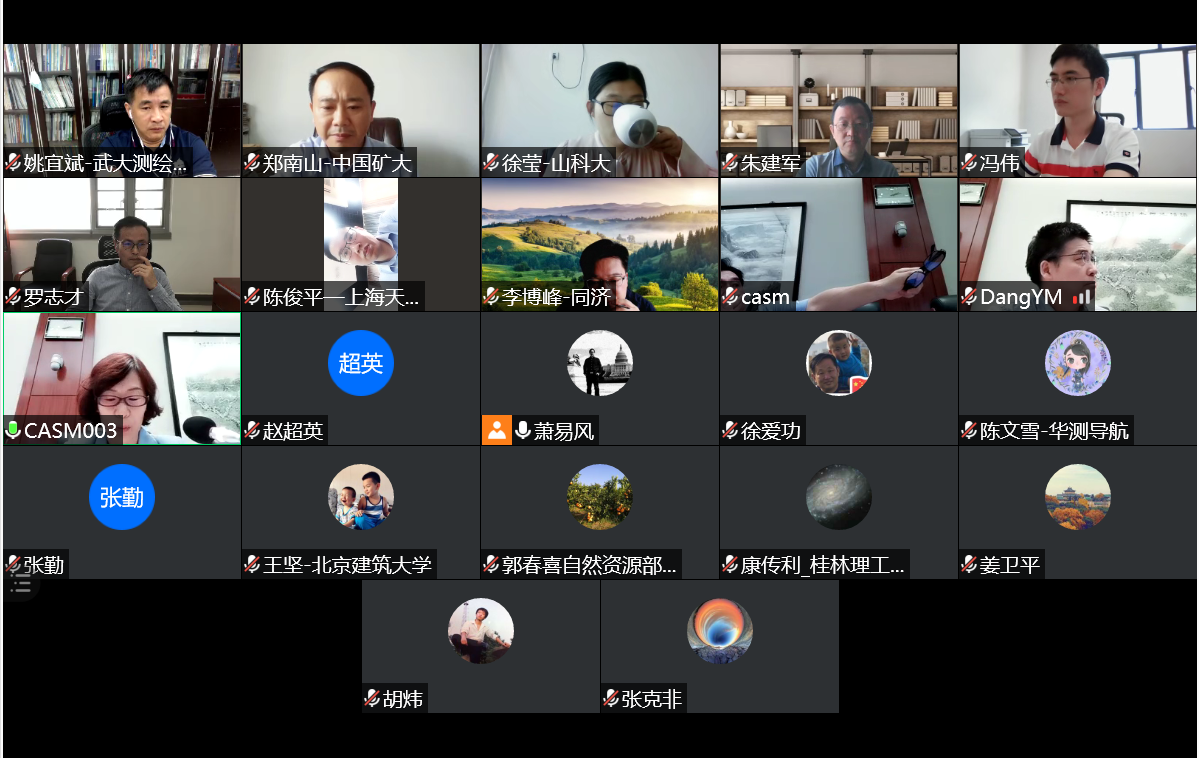June 28 to July 2 in 2021 (UTC +8), the Scientific Assembly of the International Association of Geodesy (IAG 2021), every four years, was successfully held in Beijing. This assembly was sponsored by the International Association of Geodesy, and undertaken by the Chinese society for Geodesy Photogrammetry and Cartograph, and co-organized by Chinese Academy of Surveying and Mapping, Chang’an university, and other 17 universities and research institutes in China. This is the second time for China to hold the IAG in nearly 30 years since 1993. The theme of the Assembly is "Geodesy for a Sustainable Earth". A number of scientific symposiums are set, which covers the reference frame, earth gravity field, earth rotation & geodynamics, navigation & positioning, geodetic observation system, marine geodesy and quantum technology for geodesy, with a total of 36 seminar sessions. The assembly attracted more than 1200 experts and scholars from more than 50 countries and regions around the world to attend, and more than 600 oral and posted presentations were shown. For the first time, the live videos were also freely broadcasted for more than 50,000 people all over the world, the highest ever.
Faculties and students in Geomatics department, Chang’an university, one of the co-organizers, actively participated in the conference organization and academic exchanges. ~50 teachers and students carried out academic exchanges in many academic topics of IAG 2021, including 12 presentations. The oral presentations included “Optimizing GNSS RTK Infrastructure from the perspective of tropospheric effects”, given by Prof. Zhenhong Li; “Landslide detection, monitoring and failure mechanism research in Guizhou Province, China with multi-sensor SAR datasets”, given by Prof. Chaoyang Zhao; “Spatio-temporal variations of afterslip and viscoelastic relaxation following the Mw 7.8 Gorkha (Nepal) earthquake” given by Dr. Zhen Tian, “Quantifying glacier displacement and glacial lake outburst floods with SAR and optical images: A case study in Jinweng Co Lake, Tibet, China” by Dr. candidate Liye Yang; “Crustal rheology and heterogeneity impact on tectonic stress characteristics of North China revealed by GNSS observations” by Dr. candidate Yuan Gao; and “Monitoring phosphate mining induced landslides in karst mountainous area using multi-temporal InSAR” by Dr. candidate Hengyi Chen. Those presentations showed the latest research progress on geodesy, geological hazard monitoring, geodynamics, etc. in Geomatics department, Chang’an university.
This successful scientific assembly better showed China's strength and image, enhanced the international fame for related universities, scientific institutes, enterprises in China, and promote the international influence of Chinese Geodetic groups. By co-organizing and participating in IAG 2021, the cooperation for Chang’an university with domestic and foreign scientific institution was better enhanced, and the related faculties and students were further broadened its own academic horizons and gained a lot.

Oral presentation given by Prof. Chaoying Zhao

Oral presentation given by Dr. Zhen Tian

Prof. Qin Zhang, Chaoying, etc. attended the preparatory meeting for IAG
Introduction to IAG
IAG was initiated by European scientists in 1863 and founded in Potsdam, Germany, 158 years ago. It is the most authoritative academic organization for Geodesy in the world, with more than 70 member states. The main tasks of IAG are to coordinate and guide geodetic technology exchanges around the world, organize the global geodetic science programs or projects, provide help to geodetic activities in the developing countries, and promote global geodetic progress.
Contributed by Zhen Tian, Chaoying Zhao

 Official website
Official website Chinese
Chinese